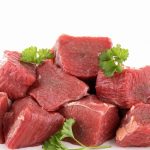Clean label is the new standard and 2016 was full of announcements around reformulation strategies, specifically sugar and sodium reduction. Last year, Mars announced that it will remove all artificial colors from its human food products as part of a commitment to meet evolving consumer preferences. By expanding the scope of the effort to its entire human food portfolio, Mars says it is making a commitment of significant depth and breadth.
But we have gone beyond clean label alone, as consumer demand for authenticity and transparency is fueled by the demand for clear label launches. This marketing term, coined by Innova Market Insights in 2014, has been jumped upon by the industry and has been an iconic description ever since.
Lu Ann Williams, Director of Innovation at Innova Market Insight, told FoodIngredientsFirst: “The running theme through our trends list is naturalness and clean label, which has now pretty much become the standard.”
“It has become somewhat of a running theme through our trends forecasts in recent years. In 2008, ‘Go Natural’ led our trends list, and since then the theme has featured each year in different forms, such as ‘Processed is Out’ in 2011, ‘From Clean to Clear Label’ in 2015 and ‘Organic Growth for Clear Label’ in 2016. This year, clean & clear is a theme weaving throughout the entire list,” explains Williams.
The trend is already leading to challenges on the supply side, with difficulty in sourcing enough natural products to deal with the surge in demand. Suppliers already have to look beyond their base and grow in diverse regions of the world. This will be one of the key issues for the food industry going forward and present a future challenge should the ongoing trend to clean & clear label continue for years to come.
What will be the key consumer trends driving the food industry in 2017 and how are they impacting supplier R&D development? Key suppliers offer their thoughts on key food industry trends to watch.
Phil a’Becket, Tic Gums Market Research Analyst certainly agrees that the demand for clean label is not slowing down. He explains: “There are several trends that will continue through 2017 particularly clean label and the overall sensory experience. With the shift to clean label, formulators are removing ingredients which can also impact important textural attributes in their applications. Many find they are unable to clearly define these textural changes and are challenged to understand the complete functionality of the ingredients they are replacing. When considering the textural needs of the consumer, manufacturers must look towards new technologies to balance clean label demands with their own formulation objectives.”
“Reformulating foods to achieve a clean label claim can present technical and formulation challenges,” notes Ellis Brouns, Rousselot Global Marketing Manager. “To overcome these challenges, formulators should partner with experienced suppliers and used thoroughly-tested ingredients, such as gelatin or hydrolyzed gelatin, proven to offer multiple functional and nutritional benefits while complying to the requirements of clean label claims.”
“That’s exactly where we focus our attention and when I refer to our innovation pipeline, these are the areas that we are interested in. This is about using the functionality that nature provides in plants, but within the constraints that those plants are safe and edible.”
“The majority of consumers are actively making healthier eating choices wherever possible. However, when it comes to manufacturing healthy products, it is not as simple as it sounds – reducing fat and sugar contents in products can affect texture, mouthfeel and flavor, making it critically important for manufacturers to use alternatives that provide some, or if not all, of the key functional properties without affecting the taste.
Sugar will continue to come under fire in 2017, although it remains the key ingredient delivering the sweetness and great taste that consumers are looking for. “Sweeter Balance” is tipped as trend 3 for 2017 by Innova Market Insights. The quest to combine taste and health is driving NPD, as the industry faces the challenge of balancing public demand to reduce added sugars and create indulgent experiences, while at the same time presenting clean label products.
The addition of ProTake (hydrolyzed gelatin) can act as a replacement to improve texture and flavor, while serving as a bulking agent due to its excellent water retention properties. While the health benefits of reduced sugar formulations are inarguable, decreased sugar content is detrimental to the overall taste experience for the consumer, according to Maria Christodoulou, IFF Marketing Manager Dairy – Flavors.
As plant-based milks, meat alternatives and vegan offerings rapidly moved into the mainstream, consumers are looking for innovative options to take the inherent benefits of plants into their daily lives. Even dairy companies are now leveraging the functional and technical benefits of plants in new product development, driving more variety and excitement into their category.
Sabrina Marnet, Product Manager for Cosucra believes the trend towards more vegetarian/flexitarian options runs in parallel with the rise of alternative proteins. “People are slowly becoming aware of the importance of reducing meat consumption, for ethical, environmental or health reasons,” she states. “This is matched with increasing innovation in the areas of meat and dairy alternatives, both from a qualitative and quantitative point of view. At the same time, the sales of alternative proteins, in particular pea proteins, have increased dramatically in the last 5 years.”
It is clear to see that suppliers are raising the bar for 2017, and we can expect even further innovation and developments in the ever changing food industry. One trend which is expected to remain in trends reports for at least the next few years is the need for clean label, Innova Market Insights Top Trend for 2017 is “Clean Supreme”, which will certainly be the heart of the supplier innovation into the coming year, with “Distruptive Green” and “Sweeter Balance” running closely behind.
Reference : www.foodingredientsfirst.com

